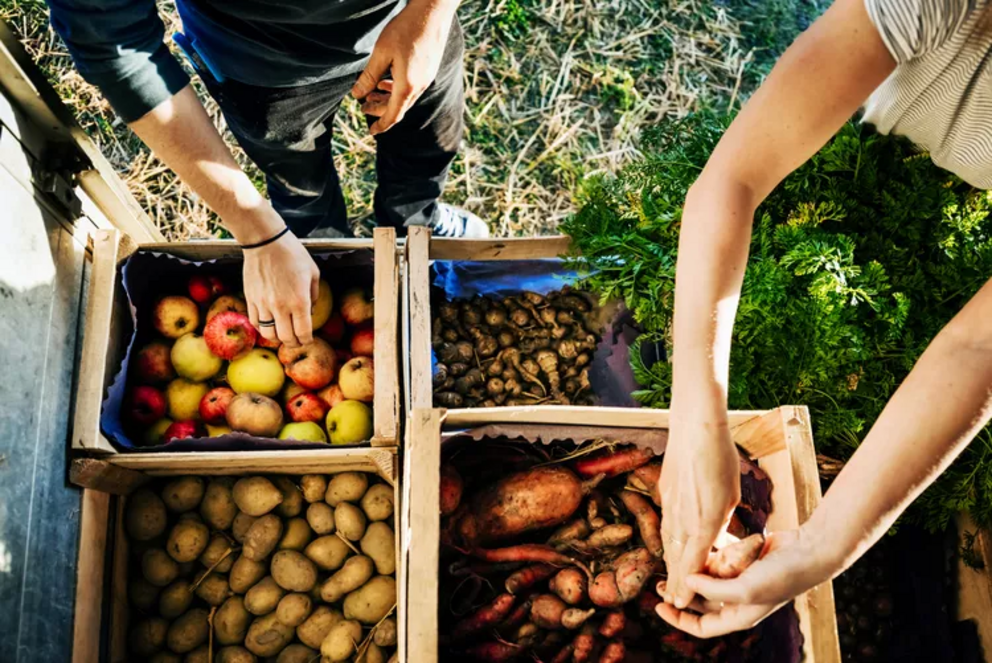Considerations for regenerative farming on a small scale
Smallholders, homesteaders, hobby farmers, and other small-scale growers can use regenerative farming techniques to ensure growing sustainably for years to come.
The big question today for any new smallholder, homesteader, hobby farmer, or other small-scale farmer is how best to coax food production from the land. Of course, that question has many answers depending on where they are located and the features of the land on which they grow.
But wherever they live and wherever they happen to grow, regenerative farming techniques ensure that they can continue growing sustainably for many years to come.
What Does Regenerative Farming Look Like?
Within regenerative farming, one of the key questions that we consider early on is exactly what regenerative farming will look like on a particular property.
First of all, it should be clear that in regenerative farming, everything comes back to the soil. In regenerative farming, the key aim is soil health. The goal is to retain and often restore and improve soils that have been degraded over time by certain farming strategies and practices.
It should be clear to all those who have an interest in regenerative farming that a regenerative farm will look rather different from conventionally farmed land nearby. The soil will typically not be tilled and will be disturbed as little as possible.
Healthy soil produces more food with greater nutrition, stores a lot more carbon (helping to mitigate climate change), and increases biodiversity.
But how exactly we create and maintain that healthy soil is up for debate. And it is in these areas of debate that we can find the key differences in how regenerative farming will look.
Regenerative farming will often include certain features or come with certain expectations, such as increased tree numbers and the careful combination of rotational cropping or grazing practices with permanent perennial planting.
But regenerative farming can take very different forms, from food forests to more traditional farm fields, with many variations in between.
A Key Question for Small-Scale Regenerative Farming
One of the key questions for those wishing to adopt a regenerative farming approach is whether the farm will be vegan or if it will integrate livestock into the plans.
On vegan or livestock-free properties, the idea is that we care for the soil and maintain its fertility through practices such as cover crops and green manures.
For ongoing fertility, those who do integrate animals—either for meat production or for the production of eggs, milk, etc.—will rely on the fertilizer that the animals provide through their manure.
Whether a vegan/vegetarian or livestock-rearing solution is right for a particular site does not only depend on moral preferences or beliefs. It also depends on a number of different practicalities to do with the current state of the land and the conditions to be found there.
Of course, it will also depend on the amount of land available. When space is limited, every inch of land counts, and so it is important to think about how, on a particular piece of land, we can maximize food production while also doing the right thing for people and planet.
When it comes to regenerative farming, there is no one-size-fits-all approach but rather a series of interlinked and related responses, all of which can be implemented in different settings to achieve the same or very similar results.
Reciprocity in Small-Scale Regenerative Farming
No matter what other decisions you make about what your regenerative farming will look like and which approaches you will adopt, regenerative farming on a small scale involves an imaginative leap—that we should reciprocate in our dealings with the rest of the natural world, that we build a relationship with the land that is not just take-take-take.
Reciprocity—giving back—is an especially important thing to think about. Whether we feed the land to help it feed us through vegan means or using livestock, the underlying concept remains the same.
On a small-scale regenerative farm, working out how best to use the land area available is a key concern. And we need to build the idea of reciprocity into our plans to make sure that whatever we choose to use the land for, we can continue to do so over the years to come.

